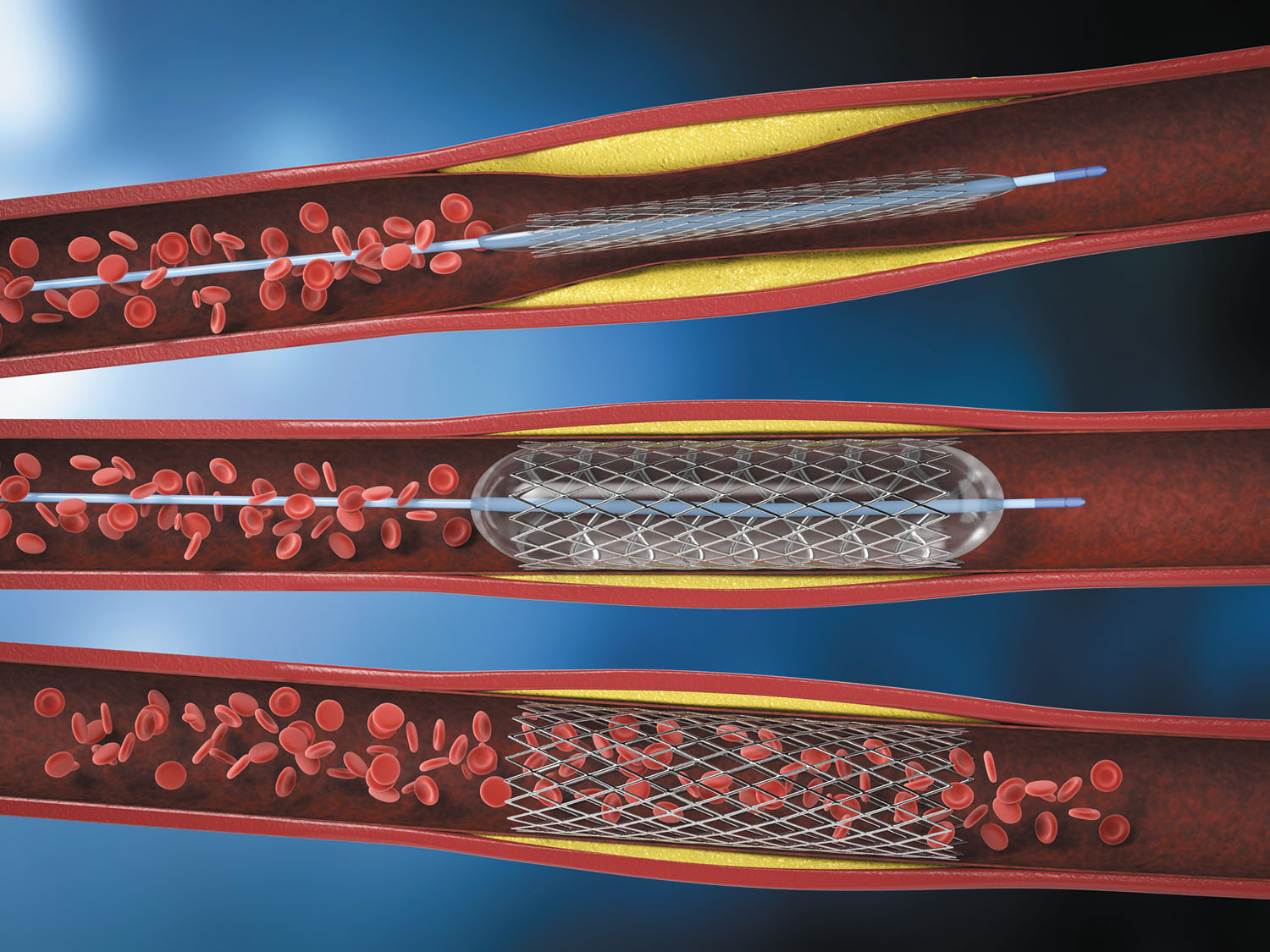Whether you've had a stent placed or may need one in the future, here's what you should know about these tiny devices

Close to a million heart stents to open blocked or narrowing arteries are implanted each year in the United States, and as you age, the odds rise that you'll end up on the list of recipients.
"Getting a stent can save your life during a heart attack, but what you do after the procedure can dictate your future heart health," says Dr. C. Michael Gibson, a cardiologist with Harvard-affiliated Beth Israel Deaconess Medical Center.
Improving blood flow
Stents open up clogged arteries. Coronary arteries, which feed oxygen-laden blood to the heart muscle, can become blocked by the buildup of fatty deposits called plaque.
This reduces the supply of oxygen to the heart, which can cause fatigue, shortness of breath, and pain in the chest, arm, or neck. (However, it's also possible to have a blockage and no symptoms.) If a clot forms in the clogged artery and completely or partially blocks blood flow, the result can be a heart attack.
A cardiologist can open a blockage during a procedure called an angioplasty. A catheter (a thin, hollow plastic tube) is inserted into the wrist or groin and threads it through the blood vessels into the blocked coronary artery.
The catheter tip carries a deflated balloon covered by the stent's wire mesh. Inflating the balloon expands the stent, pushing it against the inside of the artery wall. This opens the artery to allow blood to flow freely. The balloon and catheter are then removed, and the stent remains, propping the artery open (see illustration above).
For years, stents consisted only of metal, but about 25% of coronary arteries treated with them would again close up after about six months. "Today, cardiologists most often use drug-eluting stents, which are coated with a medicine that keeps blockage from returning by inhibiting scar tissue from forming inside the stent, a major problem with bare-metal stents," says Dr. Gibson.
When you need one
Stents are needed in emergencies, during a heart attack. Angioplasty and a stent also may be recommended if you have persistent heart symptoms, such as chest pain, weakness, or the need to catch your breath after mild exertion. Age is not a factor, as you can get a heart stent well into your 80s in most cases.
Before considering stent placement for angina (chest pain with exertion), your doctor will suggest lifestyle strategies as first-line treatment. This includes adopting a heart-healthy diet that includes plenty of vegetables and healthy fats like fish oil and less unprocessed and high-sugar foods, as well as doing prescribed cardio exercise.
Your doctor will also want to maximize your drug therapy, which usually means taking low-dose aspirin to prevent clots, a high-dose statin to lower cholesterol and prevent further plaque buildup, and medications to maintain normal blood pressure. If your condition doesn't improve, your doctor may suggest a stent.
Keep up heart habitsDon't think that a stent is an excuse to be less mindful about heart health. In fact, research has found they don't extend life expectancy. "A stent won't stop or prevent blockage in other areas, which is why you need to continue heart-healthy habits," says Harvard cardiologist Dr. C. Michael Gibson. This includes managing cholesterol, maintaining a healthy diet and weight, and getting plenty of exercise. |
What to expect
Getting a heart stent is considered a minimally invasive procedure — you get a sedative to help you relax — and the entire process takes a few hours.
You recover in the hospital for several hours before going home, or you may have to stay overnight, depending on your condition and whether you had a stent because of a heart attack. Bruising or soreness is common at the insertion point, and you may feel tired for a few days. You also should seek medical help if you have any of the following:
- redness, swelling, drainage, or fever
- changes in temperature or color in the arm or leg where the procedure was performed
- faintness or weakness
- chest pain or shortness of breath.
You usually need to take both low-dose aspirin and another antiplatelet drug for at least six months to help prevent blood clots. Most people stay on low-dose aspirin indefinitely.
People often can return to light, routine activities after a few days. It's usually safe to resume strenuous physical activity (including lifting heavy objects) after three to four weeks, but check with your doctor first. Stents are permanent, but up to 5% will redevelop blockage that might cause heart symptoms again.
"But if you haven't had any problems after six months or so, the odds of having a problem after that time continue to go down," says Dr. Gibson.
Image: © PhonlamaiPhoto/Getty Images
Subscribe to Harvard Health Online for immediate access to health news and information from Harvard Medical School.
- Research health conditions
- Check your symptoms
- Prepare for a doctor's visit or test
- Find the best treatments and procedures for you
- Explore options for better nutrition and exercise
New subscriptions to Harvard Health Online are temporarily unavailable. Click the button below to learn about our other subscription offers.
Disclaimer:
As a service to our readers, Harvard Health Publishing provides access to our library of archived content. Please note the date of last review or update on all articles. No content on this site, regardless of date, should ever be used as a substitute for direct medical advice from your doctor or other qualified clinician.
"story" - Google News
March 19, 2021 at 01:23AM
https://ift.tt/3bZ3P4L
The story on heart stents - Harvard Health - Harvard Health
"story" - Google News
https://ift.tt/2YrOfIK
https://ift.tt/2xwebYA
Bagikan Berita Ini














0 Response to "The story on heart stents - Harvard Health - Harvard Health"
Post a Comment